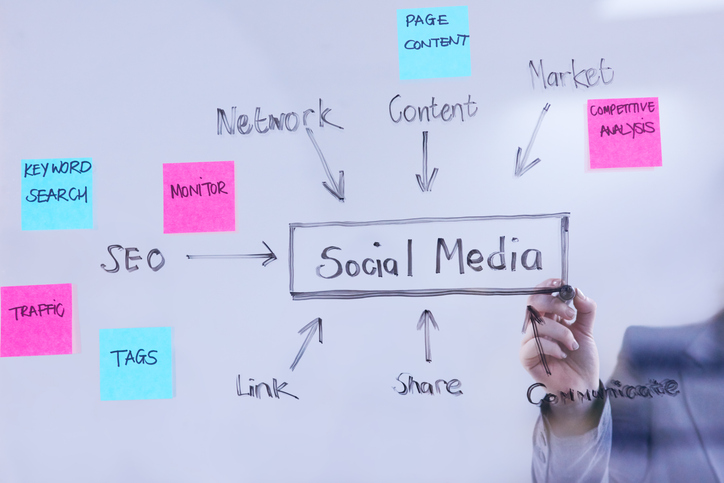
As the world becomes more complex, nonprofits encounter distinct challenges that require creative strategies to sustain growth and enhance impact. While the mission remains the heart of any nonprofit, optimizing operations is crucial for future-proofing your organization.
Why Operational Efficiency Matters
Operational efficiency might not seem glamorous, but it is vital for nonprofits aiming to expand their reach and achieve long-term goals. Inefficient processes can drain resources, limit your impact, and frustrate both staff and stakeholders. By streamlining operations, nonprofit leaders can better allocate resources, improve service delivery, and enhance stakeholder satisfaction.
Key Areas to Focus On
1. Financial Management: Effective financial management ensures that your nonprofit can sustainably grow and fulfill its mission. Consider adopting budgeting tools and accounting software to enhance transparency and financial forecasting. Regular audits and financial training for staff will also prevent misuse of funds and build trust among donors and stakeholders.
2. Technology Integration: Investing in the right technology can transform the way your nonprofit operates. Cloud-based tools and platforms streamline processes, improve communication, and allow for more efficient data management. Consider implementing a donor management system, collaborative platforms, or even AI-driven tools for data analysis to optimize outreach and fundraising efforts.
3. Human Resources Development: A motivated and well-trained workforce is the backbone of any successful nonprofit. Provide ample opportunities for professional development and continuous learning. UST HR Workplace offers a robust cloud-based platform featuring over 300 employee training courses, HR tools, templates, and access to Certified HR Experts. This ensures your team is well-equipped to tackle challenges and drive the organization forward.
4. Strategic Planning: Developing a comprehensive strategic plan aligned with your mission and vision ensures all stakeholders are working towards common goals. Regularly revisiting and updating your strategic plan helps your nonprofit adapt to changing circumstances and seize new opportunities. Engage board members and staff in strategic planning sessions to ensure a collaborative approach and diverse perspectives.
5. Community Engagement: Building strong relationships with stakeholders, volunteers, and the communities you serve is crucial for nonprofit growth. Regularly communicate your mission, successes, and needs through newsletters, social media, and community events. Encourage feedback and involvement to foster a sense of ownership and partnership among your supporters.
Preparing for Future Growth
To position your nonprofit for future success, it’s essential to lay a solid foundation today. This involves not only optimizing current operations but also being open to innovation and change. Encourage a culture of continuous improvement and adaptability within your organization. Foster collaboration and knowledge-sharing among staff and stakeholders to drive innovation and maximize impact.
Take Action Today
Ready to take your nonprofit’s operations to the next level? Sign up for UST HR Workplace, free 60-day trial, and explore their comprehensive HR Workplace platform. This cloud-based solution provides HR tools, templates, and on-demand trainings—empowering nonprofit employers to create a safe, compliant, and productive workplace. You’ll gain access to:
Don’t miss this opportunity to enhance your organization’s efficiency and prepare for sustainable growth. Click here to start your free trial of UST HR Workplace today.
By optimizing operations and preparing for the future, nonprofit leaders can ensure their organizations remain resilient, impactful, and ready to tackle the challenges of tomorrow.

The end of the year often brings a whirlwind of professional and family obligations – especially for nonprofit leaders. You may find yourself juggling end-of-year fundraising drives, community events and treasured family holiday traditions.
But there’s also a key step you should take during November and December to set up your nonprofit for success in 2025—spend dedicated time reviewing your strategic plan. In fact, this may be one of the most valuable gifts you can give your organization during these busy months. The following questions can be a smart way to get started:
Ways To “Crowdsource” Your Year-End Review
Of course, revisiting your 2024 strategic plan doesn’t need to be a solo exercise. In fact, tackling this important review on your own can easily result in tunnel vision and missed opportunities for the coming year.
Working with your nonprofit’s leadership team, frontline employees, and community stakeholders can give you a more robust, 360-degree picture of how successfully your organization performed in 2024. In turn, that can give you a clearer vision of your priorities in 2025.
SMART Strategy Adjustments Can Help Kickstart 2025
After a solid review of the current year’s strategic plan and the results your nonprofit achieved, the next step is using the SMART strategy to fine-tune your organization’s priorities for the new year. This includes setting up goals that are:
SPECIFIC: If you currently serve 100 members of your community through an outreach program, your goal could be to serve 20% more people in 2025.
MEASUREABLE: When writing your goal of serving 20% more people, be sure to define what exactly qualifies as “serving 20% more people.” Is it a total of 20% more community members attending a certain type of event across the entire year? Is it an average of 20% more people consistently participating each month?
ACHIEVEABLE: Deliberately ambitious goals are intended to inspire staff members. However, if your team believes there’s no realistic way they can meet the new goal, it may have the opposite effect. In essence, you’re looking for the sweet spot between a goal which is so easily achievable that your nonprofit doesn’t have to do much to meet it and a goal which is so lofty that people stop trying because it’s too overwhelming.
RELEVANT: Given the resource limitations often facing nonprofits, it’s critical to make sure your organization’s goals squarely target your mission. It can often be tempting to branch into new tangents in the hope of reaching new audiences. But it’s important to take a step back to make sure your goals reinforce your mission rather than spreading your organization too thin.
It’s not uncommon to have a wish list of goals that exceeds your nonprofit’s resources. One helpful way to narrow down potential strategic goals is to list all goals on a sheet of paper with “Start”, “Stop” and “Keep” boxes next to each one. Encourage multiple staff members, board members, and other organization leaders to quickly mark one of the boxes for each goal. Tallying total responses can be an illuminating way to rank the priority of each potential goal.
TIME-BASED: Setting a specific timeline for each goal can help team members measure their progress. Consider breaking larger strategic goals into a series of short-term priorities to be accomplished within tighter deadlines. This can help staff members focus on the basic steps during each short-term priority.
It’s also a good way to more easily monitor whether the team is on track to meet the larger strategic goal – by spotting missed deadlines when there’s still time to correct your overall approach.
Taking time at the end of the year to evaluate where your organization will land on 2024 goals can be the key to confidently starting 2025 off on the right foot.
In addition to fine-tuning your organization’s strategy and goals for the coming year, November and December can also bring about complex HR questions as your nonprofit closes out 2024. UST can help you find reliable answers on questions about employee paperwork, whether a staff member should be categorized as full-time or part-time or how your HR staff should handle changing regulations in your state. Sign up today for a free 60-day trial of UST HR Workplace!
SOURCES:
“How To Set Strategic Goals At Year End For Your Nonprofit,” Globalgiving.org, 11/20/23

Social media has become an indispensable tool for nonprofit organizations in today’s digital age. It offers unprecedented opportunities to engage with communities, amplify your message, and drive impactful change. However, navigating this rapidly evolving landscape requires strategy, creativity, and a keen understanding of your audience.
The Power of Social Media for Nonprofits
Social media platforms like Facebook, X (formerly Twitter), Instagram, and LinkedIn have transformed how nonprofits connect with their supporters. Here are a few reasons social media is crucial for nonprofit engagement:
Strategies for Effective Engagement
To harness the full potential of social media, consider the following strategies:
1. Define Your Goals: Before you begin posting, outline clear objectives for what you want to achieve. Whether it’s increasing awareness, boosting donations, or growing your volunteer base, having clear goals will guide your content strategy.
2. Know Your Audience: Understand who your audience is and tailor your messaging to their interests and preferences. Use analytics tools to gain insights into your followers’ demographics and engagement patterns.
3. Craft Compelling Content: Create content that resonates with your audience. Use storytelling to highlight personal stories of those impacted by your work, share success stories, and showcase behind-the-scenes glimpses of your organization’s efforts.
4. Leverage Visuals: Visual content is more likely to be shared and remembered. Use images, infographics, and videos to grab the viewer’s attention and communicate your message more effectively.
5. Engage Actively: Social media is not just about broadcasting messages; it’s about fostering dialogue. Respond to comments, engage in conversations, and show appreciation for your supporters’ contributions.
6. Collaborate and Network: Partner with influencers and other organizations to expand your reach. Cross-promotions can introduce your cause to new audiences.
7. Monitor and Adapt: Regularly review your social media performance to understand what is working and what items may need improvement. Be ready to adapt your strategy based on these insights.
Overcoming Challenges
While social media offers numerous opportunities, it also presents challenges such as managing negative feedback, keeping up with platform changes, and balancing time and resources. It’s important to have a crisis management plan and a dedicated team or volunteer to monitor and manage your social media presence.
Social media holds immense potential for nonprofits to engage more deeply with their communities and drive their missions forward. By implementing strategic, audience-focused approaches, your organization can create meaningful connections and foster long-term support.
Ready to learn more? Read more UST blogs here on how we can help support the growth of your nonprofit.

In today’s evolving nonprofit sector, fostering diversity and inclusion within the workforce is not just a moral imperative but also a strategic advantage. While the sector is racially diverse, there remains a significant gap in leadership representation. This blog post will explore the current state of workforce diversity in nonprofits, the benefits of a diverse and inclusive workforce, and practical steps your organization can take to close the diversity gap.
The Diversity Gap in Nonprofit Leadership
Despite the nonprofit sector’s overall diversity, leadership ranks do not reflect this variety. According to data from 59,550 public charities that shared demographic data between July 2019 and January 20241:
This suggests that while people of color are well-represented at the staff level, they are disproportionately confined to smaller organizations and underrepresented in larger, wealthier nonprofits. The discrepancy raises important questions about biases in hiring practices and opportunities afforded to white individuals early in their careers.
Benefits of a Diverse and Inclusive Workforce
A diverse and inclusive nonprofit workforce offers numerous benefits:
Six Steps to Building a Diverse and Inclusive Workforce
1. Conduct a Diversity Audit: Start by assessing your current diversity levels at all organizational levels. Identify gaps and areas for improvement to set clear, measurable goals.
2. Foster an Inclusive Culture: Create an environment where all employees feel valued and included. Encourage open dialogue about diversity and inclusion and implement policies that support a respectful and collaborative workplace.
3. Revise Recruitment and Hiring Practices: Ensure your recruitment processes attract diverse candidates. Use blind recruitment techniques to minimize biases and create diverse hiring panels to make more inclusive hiring decisions.
4. Provide DEI Training and Development: Educate your staff about the importance of diversity, equity, and inclusion. Offer regular training sessions and workshops. UST HR Workplace offers 300+ employee training courses, including DEI training and awareness.
5. Establish Mentorship and Sponsorship Programs: Support underrepresented groups by establishing mentorship and sponsorship programs. These initiatives can help emerging leaders gain the skills and networks they need to advance in their careers.
6. Monitor Progress and Accountability: Regularly review and report on diversity and inclusion metrics. Hold leadership accountable for progress toward diversity goals and celebrate successes along the way.
Building a diverse and inclusive nonprofit workforce is crucial for creating impactful and sustainable change. By taking intentional steps to promote diversity and inclusion, your organization can improve its effectiveness and better serve the communities it aims to support.
Are you ready to transform your nonprofit workforce? Click here to start your free 60-day trial of UST HR Workplace. Access not only 300+ employee training courses, but live certified HR experts, an online employee handbook builder and much more.
Join us on this vital mission to champion diversity and inclusion within the nonprofit sector. Together, we can create a more equitable future for all.
Source

Nonprofit organizations – characterized by their commitment to social, charitable or educational missions – often operate under tight financial constraints. These constraints make it crucial to minimize overhead costs – expenses that are necessary to support the organization but do not directly contribute to its program activities. These costs include executive salaries, accounting fees, marketing expenses, fundraising costs and membership development.
While these expenses are essential for maintaining operations, they can dilute the funds available for the core mission if not carefully managed. Generally, nonprofits allocate around 20% of their budget to overhead. By strategically reducing these costs, nonprofits can direct a larger portion of their resources towards impactful program activities, thereby enhancing overall efficiency and effectiveness.
Below, we’ll briefly go over a few ways to effectively reduce overhead costs and streamline operations.
Strategies for Overhead Reduction
1. Reduce Physical Office Expenses
The cost of maintaining physical office space is a significant part of overhead for many nonprofits. Exploring alternative office arrangements can yield substantial savings. Options like co-working spaces, telecommuting or fully virtual offices can drastically reduce or even eliminate expenses related to lease, utilities and office maintenance. Effective lease negotiations – armed with thorough market rate research – could also help in lowering costs.
Nonprofits can ensure they are not overpaying for unused or underutilized space by regularly reassessing their space needs and optimizing office layouts. What’s more, by nurturing a culture that supports remote work, nonprofits can reduce the necessity for large office spaces, enabling a more flexible and responsive organizational structure.
2. Embrace Green Practices
Sustainable practices are increasingly important not only for environmental reasons but also for cost efficiency. Nonprofits can adopt energy-efficient measures like LED lighting, programmable thermostats and high-efficiency appliances to cut utility costs. Simple changes like implementing double-sided printing and using recycled materials can also reduce purchase costs and waste disposal fees. These environmentally friendly practices resonate well with donors and can enhance the organization’s public image. Additionally, obtaining certifications for sustainable practices can boost a nonprofit’s credibility and attractiveness to eco-conscious investors and grant-making bodies.
3. Leverage Virtual Communication
Advancements in technology have made virtual communication tools more effective and affordable. Nonprofits can capitalize on this by using video conferencing to reduce travel expenses, adopting online project management tools to enhance team efficiency and utilizing cloud-based platforms for real-time data sharing and collaboration. These tools reduce costs while also helping improve organizational agility and employee satisfaction by supporting flexible work arrangements. Further integration of these tools can foster a culture of innovation and help to attract tech-savvy volunteers and staff.
4. Build a Volunteer Force
Volunteers are a vital resource in reducing manpower costs. Developing a strong volunteer program can enable nonprofits to delegate administrative, operational and even some programmatic functions to skilled volunteers. This not only saves on labor costs but also strengthens community engagement and support. Effective volunteer management makes it so that volunteers are well-integrated into the organization’s culture and operations, maximizing their contributions and satisfaction.
5. Go Digital
The transition to digital operations can significantly cut costs associated with paper, printing and document storage. Embracing digital communications and marketing efforts – like newsletters, social media campaigns and annual reports – can reduce production and distribution costs while reaching a broader audience. Cloud computing solutions can also decrease IT infrastructure costs and enhance data security and accessibility. Adopting advanced analytics to monitor the effectiveness of digital strategies enables more targeted and efficient resource use.
6. Renegotiate with Vendors
Periodic renegotiation with vendors for services like internet, printing and supplies can prevent increased cost and secure more competitive pricing. Encouraging multiple bids for new contracts and regularly reviewing existing ones can improve terms and uncover cost-saving options. Additionally, establishing and maintaining long-term relationships with reliable vendors can lead to loyalty discounts and enhanced service quality. Strengthening these partnerships through consistent communication and feedback transforms them into valuable collaborations that extend beyond routine transactions.
7. Seek Free and Discounted Resources
Many businesses and organizations offer special pricing or donations for nonprofits, including software licenses, office supplies and professional services. Actively seeking these opportunities can drastically reduce operational costs. Government and private grants designed to support nonprofit administration can also offset overhead expenses, allowing more funds to be directed towards mission-related activities. Developing a strategy to regularly review and apply for new funding opportunities helps ensure that nonprofits continuously benefit from available resources, keeping their operations lean and focused on their mission.
Streamline Nonprofit Operations for Greater Impact
Efficiently managing overhead costs is critical for maximizing the resources dedicated to the mission-driven work of nonprofits. By implementing the strategies discussed above, nonprofits can enhance their operational efficiency, reduce expenses and ultimately increase their impact.
Additionally, exploring resources like UST Trust – which helps nonprofits minimize HR liabilities and unemployment claims – can further allow organizations to focus on their primary goals without undue financial distractions. For more detailed guidance and support in managing overhead, fill out our Free Savings Analysis form and find out if UST Trust is right for your organization.

Nonprofit organizations play a crucial role in our communities, offering services, support, and a voice for those in need. However, managing a nonprofit, particularly in terms of staffing and volunteer teams, comes with its own set of challenges—especially when it comes to finances. Balancing the budget while ensuring your organization can function effectively and make an impact is a delicate dance. Fortunately, there are strategies that can both save money and strengthen your team. One significant, yet often overlooked area of opportunity lies in how nonprofits manage unemployment costs.
Reassessing Your Unemployment Tax Strategies
For over 40 years, UST has stood as a steadfast ally to nonprofit organizations, providing a pathway to substantial savings and operational efficiencies through the UST Trust. For 501c3 nonprofit employers, understanding how to manage unemployment costs effectively can unlock funds that are better allocated towards mission-critical activities.
The concept is straightforward but powerful. A federal law exists that allows 501c3 nonprofits the option to opt out of the traditional state unemployment tax system. Instead, organizations can become reimbursing employers, paying the state only for their actual unemployment claims—dollar for dollar. This approach can lead to significant savings, especially for nonprofits with stable employment rates.
Building a Financial Asset While Saving Money
UST Trust was established in 1983 to assist nonprofits in navigating this alternative. By choosing UST Trust for your tax reimbursements, your organization can create a reserve fund that not only prepares you for unemployment claims but also serves as a financial asset. Nonprofits that have embraced this strategy with UST have seen savings of 60% or more on their unemployment expenses.
But the benefits extend beyond just cost savings. Being a part of UST Trust means gaining access to a suite of tools designed to mitigate risks and increase operational efficiencies. From human resources advice to legal consultation and claims management, UST supports nonprofits in strengthening their operational backbone, allowing them to focus on their core mission.
Taking the Next Step
For nonprofit leaders seeking to explore the potential savings and benefits UST Trust offers, the first step is simple. UST is inviting nonprofit organizations to fill out a free savings analysis. This no-obligation analysis could be the gateway to significant savings and a more efficient way to manage your nonprofit’s unemployment costs.
If your nonprofit is looking to save money, reduce risks, and boost operational efficiency, consider exploring UST’s Trust program. By filling out a free savings analysis today, you can discover potential savings that could be a game-changer. This step not only leads you towards financial sustainability but also ensures your team and mission receive the needed support to thrive and make a positive impact in your community.
Efficiently managing your unemployment expenses enables you to reallocate funds where they matter most – your programs and staff. It’s time to seize control of your organization’s financial well-being and guide it towards a future where every dollar drives your mission forward without unnecessary overhead costs.
Take the initiative today. Reach out to UST to uncover how your organization can save, strengthen your team, and amplify your impact.

Nonprofits are driven by a mission to address societal needs and provide public benefits. This distinguishes them from profit-driven enterprises. While their primary focus isn’t financial gain, nonprofits must still navigate the economic landscape to sustain their operations and fulfill their missions effectively.
So, how do nonprofits make money? What strategies do they employ to fund their vital initiatives and programs?
Let’s dive into the topic of how nonprofits make money to ensure they can continue to make a positive impact on the communities they serve.
How to Make Money as a Nonprofit
In the realm of nonprofit management, the pursuit of financial sustainability is a perpetual endeavor. The following multifaceted strategies and avenues help nonprofits secure the resources necessary to advance their missions effectively. Here’s a look into how to make money as a nonprofit.
Traditional Donations
At the core of nonprofit funding lies the generosity of individuals and corporations. Their contributions fuel the organization’s mission-driven initiatives. These donations, whether large or small, provide the essential lifeline for sustaining operations, funding programs, and driving innovation. They empower nonprofits to make meaningful strides toward societal change.
Cultivating strong donor relationships, implementing effective fundraising campaigns, and showcasing transparent stewardship of funds are key to maximizing the impact of traditional donations. They foster long-term support for the organization’s endeavors. Additionally, demonstrating the tangible outcomes and transformative impact of donor contributions strengthens trust and loyalty. This inspires continued engagement and philanthropic support from both individuals and corporate partners.
Grants
Beyond individual donors, nonprofits often rely on foundation grants and government funding to support their initiatives. These grants offer significant financial backing, enabling nonprofits to undertake ambitious projects, expand their reach and address pressing societal issues. However, securing grants requires meticulous research, strategic alignment with funders’ priorities and robust grant management practices. All of this effort is to ensure compliance, accountability, and sustainable impact. Nonprofits must demonstrate their capacity to deliver measurable outcomes and effectively steward grant funds to maintain credibility and foster future funding opportunities.
Fundraising Events
From galas to auctions and charity walks, fundraising events serve as not only revenue-generating opportunities but are also powerful tools for community engagement and awareness-building. These events create platforms for supporters to rally around the nonprofit’s mission. They forge lasting connections and inspire ongoing support. Nonprofits can amplify their fundraising efforts and broaden their impact by leveraging creative event planning, effective marketing strategies, and volunteer mobilization.
Earned Income
Nonprofits are increasingly exploring alternative revenue streams beyond traditional fundraising methods. Social enterprises, fee-for-service programs, and merchandise sales offer avenues for generating income while advancing the organization’s mission. Whether through the sale of products, services, or experiences, nonprofits can diversify their revenue sources. This revenue helps them achieve greater financial resilience in an ever-changing landscape.
Corporate Sponsorships and Partnerships
Collaborating with businesses presents nonprofits with a myriad of opportunities beyond financial support. Corporate sponsorships and partnerships offer a gateway to expanded visibility and promotional exposure. They enable nonprofits to reach broader audiences and raise awareness for their causes. These collaborations also foster employee engagement. This encourages corporate staff to volunteer, fundraise, or participate in community service initiatives alongside nonprofit personnel.
In addition to financial contributions, businesses often bring valuable resources to the table. Their expertise often includes in-kind donations to access specialized expertise and networks. Through strategic partnerships, nonprofits can leverage these resources to enhance their capacity, innovate their programs, and extend their reach.
Investments
For financially stable nonprofits with a substantial financial base, investments offer the potential for additional income generation and long-term sustainability. Through investments, nonprofits can diversify their revenue streams and build financial reserves to weather economic uncertainties and fund future initiatives. This approach strengthens the organization’s financial footing and enhances its ability to adapt to changing market conditions. The nonprofit is able to seize new opportunities for growth and impact.
Reducing Costs for Nonprofits
The question, “How do nonprofits make money?” is a viable one, but income is not the only concern for these charitable organizations. While revenue generation serves as the lifeblood of nonprofits, prudent management of expenses is equally crucial for long-term sustainability.
By implementing strategies to enhance operational efficiency, nonprofits can streamline processes, reduce waste, and optimize resource utilization. The following are a few strategies nonprofit organizations use to reduce costs:
These concerted efforts not only optimize financial resources but also enhance organizational resilience and agility. Understanding how to make money as a nonprofit involves a combination of revenue generation and cost reduction.
Are You Still Wondering, “How Do Nonprofits Make Money?”
So, how do nonprofits make money? In the dynamic landscape of nonprofit management, the pursuit of both revenue-generating and cost-saving opportunities is critical for organizational success and sustainability. Nonprofits can position themselves for long-term growth and impact by embracing innovative strategies, fostering strategic partnerships, and prioritizing financial stewardship.
We urge nonprofit leaders and stakeholders to harness the insights and recommendations outlined in this guide. You’ll quickly recognize the transformative potential your organization holds for advancing its mission and creating meaningful change. At UST, we empower nonprofits to thrive, inspire, and continue their vital work in building a brighter future for all. For additional support and resources, explore our UST solutions. Our experts will guide you toward operating a more sustainable and impactful nonprofit organization.

As a nonprofit organization, it is essential to have a cohesive and productive team in order to efficiently achieve your mission and goals. Implementing team-building activities can significantly strengthen the bond among team members, improve communication and collaboration, and enhance overall team performance.
Research has shown that team-building activities have a positive impact on employee engagement and job satisfaction. By providing opportunities for team members to interact and work on common goals, you are creating a sense of belonging and promoting a positive work environment. This translates into better retention rates and higher productivity. Moreover, team-building activities can help identify and address areas where improvement might be needed, such as conflict resolution. As a result, team members will develop skills that are not only beneficial in the workplace but also transferable to other areas of life.
Apart from the benefits for team members, team-building activities can also benefit the organization as a whole. By fostering a positive work environment, you are more likely to attract and retain talented and dedicated volunteers and employees. You can find countless team building ideas depending on the desired outcome and your team’s culture. Below we explore the benefits of team building exercises for nonprofit employers and their employees.
1. Enhances Communication: Team building exercises enhance communication among nonprofit employees. As team members get the chance to know each other better, communication improves, leading to smoother and more efficient interactions, which aligns your workforce towards a common goal.
2. Builds Trust: Trust plays a significant role in any work environment. Team building exercises are designed to enhance the feeling of trust between colleagues, opening opportunities to share personal experiences while building respect and empathy—making it easier for teams to work cohesively.
3. Increases Productivity: When employees have the chance to connect through team-building activities, they’re more likely to produce high quality work. Team building activities can relay positive effects on an organization’s productivity and performance, thus creating a better work environment.
4. Encourages Creativity: Various team building activities allow team members to think outside the box and provide practical solutions to organizational challenges. A team with a creative mindset is more likely to come up with unique problem-solving solutions that align with the organization’s progress.
5. Promotes Inclusivity: Team building activities promote inclusion by providing a platform that promotes a positive and healthy work environment for each member of the team. Promoting inclusivity makes every member in the workplace feel valued and appreciated, which creates a comfortable and accommodating atmosphere in the workplace for everyone involved–endorsing diversification.
Implementing team-building activities at your nonprofit organization can have a significant impact on team performance, job satisfaction, employee engagement, and overall mission achievement. It is an investment that will pay dividends in the long run.

America’s charitable nonprofits serve and nurture people of every age, gender, race, and socioeconomic status—supporting at-risk communities nationwide.Due to the sensitive information being collected from program participants, volunteers, and donors alike, nonprofits are more vulnerable to a wide range of risks. And with the continuing advancement of technology, cybersecurity has become an increasingly important issue for which many nonprofits are ill-prepared to deal with.
Any unmitigated risks could easily threaten your nonprofit’s livelihood and derail your organizations operations. Discover how you can create business practices that safeguard your reputation, your donors, and the communities you serve in this on-demand recording.
In this session, we explore:
Upcoming UST Live Webinars: This webinar series was designed to equip nonprofits with the strategies and resources they need to survive (and thrive) in a constantly evolving environment. Be on the lookout for future UST Live sessions.

Creating a positive culture in the workplace should be a priority for every nonprofit employer. A positive work environment can help increase employee engagement, morale, and productivity, which are all essential to a nonprofit’s success. Creating a positive culture doesn’t have to be time-consuming or expensive – small steps can add up to big results if done consistently over time. With effective communication, positive reinforcement, and team-building activities, nonprofit employers can create an environment that sets their organization apart from the rest. By investing in their employee’s well-being, nonprofits can ensure that they are creating a positive culture that will help them achieve their mission.
With that being said, here are five simple tips to help nonprofit employers create a positive culture in the workplace:
Bonus Tip – Show Appreciation: Taking the time to thank your team members or recognize their hard work goes a long way in creating positive morale and creating an engaged workplace culture. Consider setting up reward systems or recognizing special achievements such as employee of the month awards to show your appreciation for their efforts. This is a great way to boost motivation and keep positive energy flowing in the workplace!
Creating positive cultures within organizations can be beneficial for both employers and employees. By implementing these five tips, you can take steps to build a positive work environment that will help foster engagement, morale, and job satisfaction.

UST maintains a secure site. This means that information we obtain from you in the process of enrolling is protected and cannot be viewed by others. Information about your agency is provided to our various service providers once you enroll in UST for the purpose of providing you with the best possible service. Your information will never be sold or rented to other entities that are not affiliated with UST. Agencies that are actively enrolled in UST are listed for review by other agencies, UST’s sponsors and potential participants, but no information specific to your agency can be reviewed by anyone not affiliated with UST and not otherwise engaged in providing services to you except as required by law or valid legal process.
Your use of this site and the provision of basic information constitute your consent for UST to use the information supplied.
UST may collect generic information about overall website traffic, and use other analytical information and tools to help us improve our website and provide the best possible information and service. As you browse UST’s website, cookies may also be placed on your computer so that we can better understand what information our visitors are most interested in, and to help direct you to other relevant information. These cookies do not collect personal information such as your name, email, postal address or phone number. To opt out of some of these cookies, click here. If you are a Twitter user, and prefer not to have Twitter ad content tailored to you, learn more here.
Further, our website may contain links to other sites. Anytime you connect to another website, their respective privacy policy will apply and UST is not responsible for the privacy practices of others.
This Privacy Policy and the Terms of Use for our site is subject to change.
UST maintains a secure site. This means that information we obtain from you in the process of enrolling is protected and cannot be viewed by others. Information about your agency is provided to our various service providers once you enroll in UST for the purpose of providing you with the best possible service. Your information will never be sold or rented to other entities that are not affiliated with UST. Agencies that are actively enrolled in UST are listed for review by other agencies, UST’s sponsors and potential participants, but no information specific to your agency can be reviewed by anyone not affiliated with UST and not otherwise engaged in providing services to you except as required by law or valid legal process.
Your use of this site and the provision of basic information constitute your consent for UST to use the information supplied.
UST may collect generic information about overall website traffic, and use other analytical information and tools to help us improve our website and provide the best possible information and service. As you browse UST’s website, cookies may also be placed on your computer so that we can better understand what information our visitors are most interested in, and to help direct you to other relevant information. These cookies do not collect personal information such as your name, email, postal address or phone number. To opt out of some of these cookies, click here. If you are a Twitter user, and prefer not to have Twitter ad content tailored to you, learn more here.
Further, our website may contain links to other sites. Anytime you connect to another website, their respective privacy policy will apply and UST is not responsible for the privacy practices of others.
This Privacy Policy and the Terms of Use for our site is subject to change.